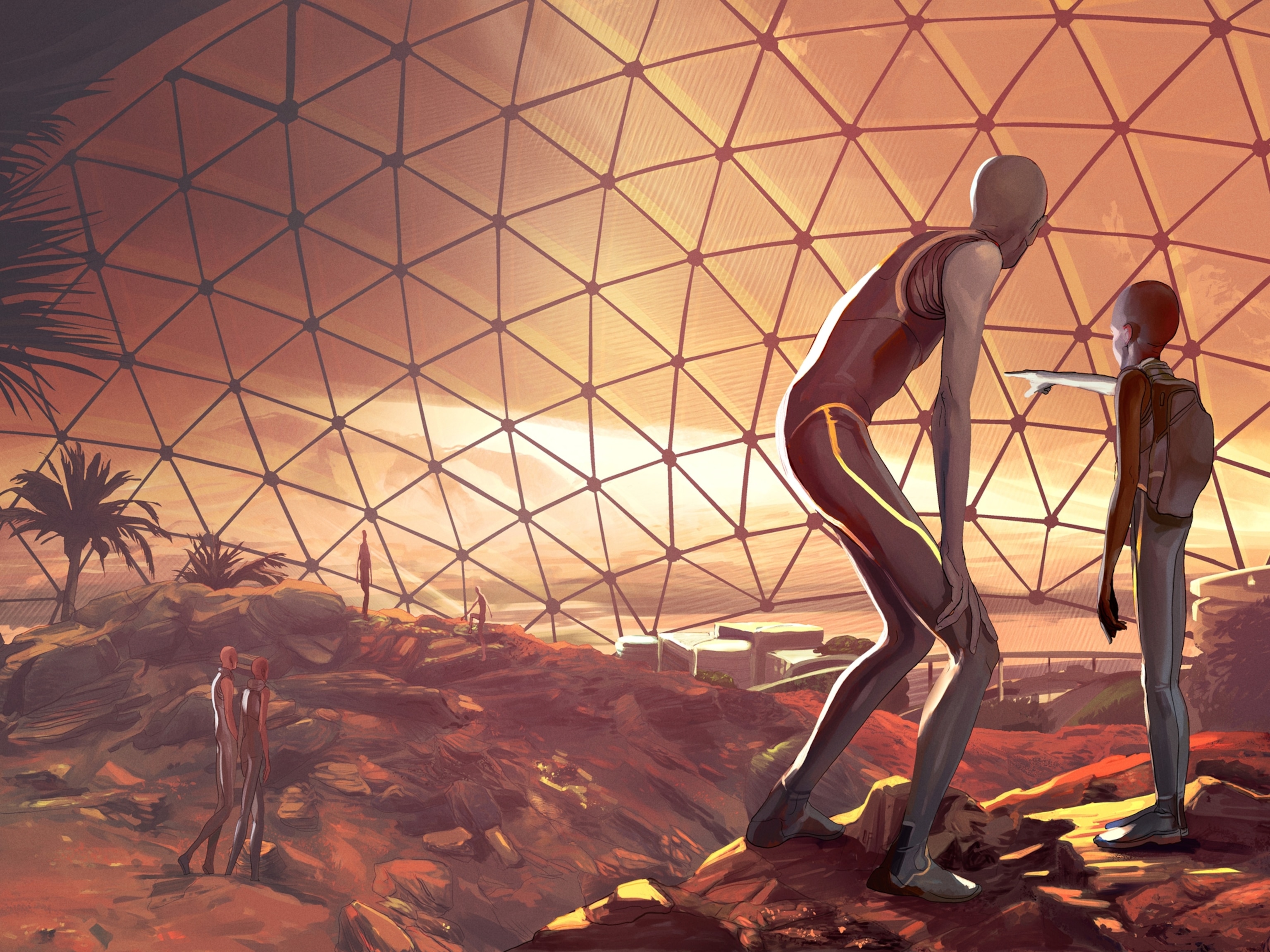

The future of spaceflight—from orbital vacations to humans on Mars
NASA aims to travel to the moon again—and beyond. Here’s a look at the 21st-century race to send humans into space.
Welcome to the 21st-century space race, one that could potentially lead to 10-minute space vacations, orbiting space hotels , and humans on Mars. Now, instead of warring superpowers battling for dominance in orbit, private companies are competing to make space travel easier and more affordable. This year, SpaceX achieved a major milestone— launching humans to the International Space Station (ISS) from the United States —but additional goalposts are on the star-studded horizon.
Private spaceflight
Private spaceflight is not a new concept . In the United States, commercial companies played a role in the aerospace industry right from the start: Since the 1960s, NASA has relied on private contractors to build spacecraft for every major human spaceflight program, starting with Project Mercury and continuing until the present.
Today, NASA’s Commercial Crew Program is expanding on the agency’s relationship with private companies. Through it, NASA is relying on SpaceX and Boeing to build spacecraft capable of carrying humans into orbit. Once those vehicles are built, both companies retain ownership and control of the craft, and NASA can send astronauts into space for a fraction of the cost of a seat on Russia’s Soyuz spacecraft.
SpaceX, which established a new paradigm by developing reusable rockets , has been running regular cargo resupply missions to the International Space Station since 2012. And in May 2020, the company’s Crew Dragon spacecraft carried NASA astronauts Doug Hurley and Bob Behnken to the ISS , becoming the first crewed mission to launch from the United States in nearly a decade. The mission, called Demo-2, is scheduled to return to Earth in August. Boeing is currently developing its Starliner spacecraft and hopes to begin carrying astronauts to the ISS in 2021.
Other companies, such as Blue Origin and Virgin Galactic , are specializing in sub-orbital space tourism. Test launch video from inside the cabin of Blue Origin’s New Shepard shows off breathtaking views of our planet and a relatively calm journey for its first passenger, a test dummy cleverly dubbed “Mannequin Skywalker.” Virgin Galactic is running test flights on its sub-orbital spaceplane , which will offer paying customers roughly six minutes of weightlessness during its journey through Earth’s atmosphere.
With these and other spacecraft in the pipeline, countless dreams of zero-gravity somersaults could soon become a reality—at least for passengers able to pay the hefty sums for the experience.
Early U.S. Spaceflight
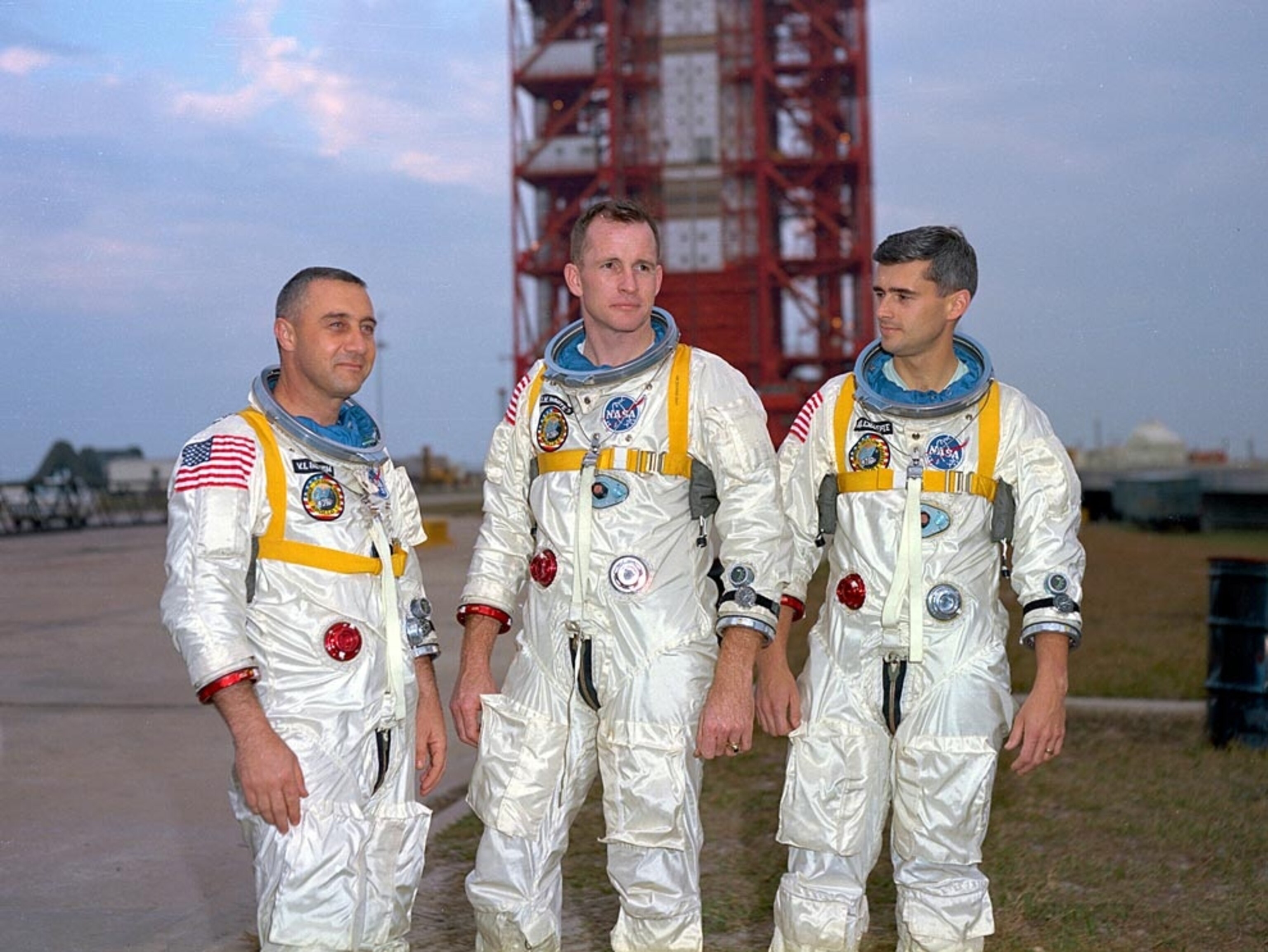
Looking to the moon
Moon missions are essential to the exploration of more distant worlds. After a long hiatus from the lunar neighborhood, NASA is again setting its sights on Earth’s nearest celestial neighbor with an ambitious plan to place a space station in lunar orbit sometime in the next decade. Sooner, though, the agency’s Artemis program , a sister to the Apollo missions of the 1960s and 1970s, is aiming to put the first woman (and the next man) on the lunar surface by 2024.
FREE BONUS ISSUE
Extended lunar stays build the experience and expertise needed for the long-term space missions required to visit other planets. As well, the moon may also be used as a forward base of operations from which humans learn how to replenish essential supplies, such as rocket fuel and oxygen, by creating them from local material.
You May Also Like

In a first, NASA Mars lander feels shockwaves from meteor impacts

SpaceX takes 4 passengers to orbit—a glimpse at private spaceflight’s future

Why go back to the moon? NASA’s Artemis program has even bigger ambitions
Such skills are crucial for the future expansion of human presence into deeper space, which demands more independence from Earth-based resources. And although humans have visited the moon before, the cratered sphere still harbors its own scientific mysteries to be explored—including the presence and extent of water ice near the moon's south pole, which is one of the top target destinations for space exploration .
NASA is also enlisting the private sector to help it reach the moon. It has awarded three contracts to private companies working on developing human-rated lunar landers—including both Blue Origin and SpaceX. But the backbone of the Artemis program relies on a brand new, state-of-the-art spacecraft called Orion .
Archival Photos of Spaceflight

Currently being built and tested, Orion—like Crew Dragon and Starliner—is a space capsule similar to the spacecraft of the Mercury, Gemini, and Apollo programs, as well as Russia’s Soyuz spacecraft. But the Orion capsule is larger and can accommodate a four-person crew. And even though it has a somewhat retro design, the capsule concept is considered to be safer and more reliable than NASA’s space shuttle—a revolutionary vehicle for its time, but one that couldn’t fly beyond Earth’s orbit and suffered catastrophic failures.
Capsules, on the other hand, offer launch-abort capabilities that can protect astronauts in case of a rocket malfunction. And, their weight and design mean they can also travel beyond Earth’s immediate neighborhood, potentially ferrying humans to the moon, Mars, and beyond.
A new era in spaceflight
By moving into orbit with its Commercial Crew Program and partnering with private companies to reach the lunar surface, NASA hopes to change the economics of spaceflight by increasing competition and driving down costs. If space travel truly does become cheaper and more accessible, it’s possible that private citizens will routinely visit space and gaze upon our blue, watery home world—either from space capsules, space stations, or even space hotels like the inflatable habitats Bigelow Aerospace intends to build .
The United States isn’t the only country with its eyes on the sky. Russia regularly launches humans to the International Space Station aboard its Soyuz spacecraft. China is planning a large, multi-module space station capable of housing three taikonauts, and has already launched two orbiting test vehicles—Tiangong-1 and Tiangong-2, both of which safely burned up in the Earth’s atmosphere after several years in space.
Now, more than a dozen countries have the ability to launch rockets into Earth orbit. A half-dozen space agencies have designed spacecraft that shed the shackles of Earth’s gravity and traveled to the moon or Mars. And if all goes well, the United Arab Emirates will join that list in the summer of 2020 when its Hope spacecraft heads to the red planet . While there are no plans yet to send humans to Mars, these missions—and the discoveries that will come out of them—may help pave the way.
Related Topics
- SPACE EXPLORATION
- SCIENCE AND TECHNOLOGY

Second SpaceX megarocket launch ends with another explosion. What happens next?

Why did India land near the moon’s south pole?

U.S. returns to the moon as NASA's Odysseus successfully touches down

In the Arizona desert, NASA prepares for walking on the moon

The moon’s darkest corners are a mystery. This image offers a stunning new glimpse.
- Environment
- Perpetual Planet
History & Culture
- History & Culture
- History Magazine
- Mind, Body, Wonder
- Paid Content
- Terms of Use
- Privacy Policy
- Your US State Privacy Rights
- Children's Online Privacy Policy
- Interest-Based Ads
- About Nielsen Measurement
- Do Not Sell or Share My Personal Information
- Nat Geo Home
- Attend a Live Event
- Book a Trip
- Inspire Your Kids
- Shop Nat Geo
- Visit the D.C. Museum
- Learn About Our Impact
- Support Our Mission
- Advertise With Us
- Customer Service
- Renew Subscription
- Manage Your Subscription
- Work at Nat Geo
- Sign Up for Our Newsletters
- Contribute to Protect the Planet
Copyright © 1996-2015 National Geographic Society Copyright © 2015-2024 National Geographic Partners, LLC. All rights reserved
- Skip to main content
- Keyboard shortcuts for audio player
3 predictions for the future of space exploration — including your own trips

Alejandra Marquez Janse

Mary Louise Kelly
Tinbete Ermyas

Peggy Whitson says more widely available space tourism is realistic. Axiom Space hide caption
Peggy Whitson says more widely available space tourism is realistic.
If you've ever traveled somewhere that left you so enthralled that you wanted to go back over and over, then you get how Peggy Whitson feels about space.
She is a seasoned astronaut who has multiple achievements under her belt: She was the first woman to command the International Space Station, and in 2017 broke the record for most cumulative days in space of any American and female astronaut, with a count of 665.
Whitson retired from NASA nearly five years ago, but last month, at age 63, she packed up the necklace she wore on her wedding day, zipped her spacesuit one more time, and took flight in a SpaceX capsule as commander of the Ax-2 mission. It was sponsored by a private company, Axiom Space, where she now works as the director of human spaceflight. Three paying crew members traveled with her.
After returning to Earth, Whitson spoke with All Things Considered host Mary Louise Kelly and shared a few thoughts about the future of space exploration.
This interview has been edited slightly for clarity and brevity.

The Ax-2 crew in a training session. The group, composed of Whitson (far left) and three paying costumers, spent nine days in space last month. Axiom Space hide caption
The Ax-2 crew in a training session. The group, composed of Whitson (far left) and three paying costumers, spent nine days in space last month.
1. Space exploration will be a mix of public and private money
If you look at even the NASA missions returning to the moon, lots of different private space companies are involved in that process. And that includes Axiom Space, for instance, who are building the spacesuits that will be used by the NASA astronauts as they step on the moon again. So it's exciting to be part of this changing philosophy of space and the efforts of commercial companies like Axiom Space. We intend to build the first commercial space station initially attached to the International Space Station, but to undock before the space station is decommissioned.
I think it's a worldwide relationship between different companies and peoples, and that's what makes it such a special time to be a part of the [Ax-2] mission, because [space exploration] is changing flavor and it's exciting because there are going to be many more opportunities in the future.

The Ax-2 crew returns to Earth. Could this be you one day? Axiom Space hide caption
2. More people will be able to go to space
Obviously some of it will take time to make it not cost-prohibitive, but the fact that we are taking those initial steps is really important now. If you look back at commercial aviation and how that occurred and the development of that process, you know, it also started off to be only a few people could be involved and then later more and more, and so now it's pretty commonplace. I like to think that we're doing some of the same steps in commercial spaceflight now.
3. The goals depend on the person — and the country — that's traveling
Well, the objective of the mission is slightly different, obviously. My personal roles and responsibilities of taking care of the crew and ensuring their safety obviously are very similar. But our objectives were, we had one private astronaut, John Shoffner, who was trying to develop science, technology, engineering and math (STEM) outreach products for educators in the future, as well as doing research. And then we had two government sponsored astronauts from Saudi Arabia – the first female Saudi Arabian to fly in space and go to the International Space Station – and the second male to arrive.

SpaceX mission returns from space station with ex-NASA astronaut, 3 paying customers
So the objectives of the crew weren't all that much different necessarily than a NASA mission, which is outreach and scientific investigations, but these were with the specific goals of expanding outreach in specific areas for Saudi – which hadn't had a person in space for 40 years – and, you know, to inspire their youth as well as inspiring the youth in the United States.
- Environment
- Road to Net Zero
- Art & Design
- Film & TV
- Music & On-stage
- Pop Culture
- Fashion & Beauty
- Home & Garden
- Things to do
- Combat Sports
- Horse Racing
- Beyond the Headlines
- Trending Middle East
- Business Extra
- Culture Bites
- Year of Elections
- Pocketful of Dirhams
- Books of My Life
- Iraq: 20 Years On
Interstellar travel: From science fiction to reality
Humans may one day travel beyond the solar system on board rockets powered by nuclear fusion.
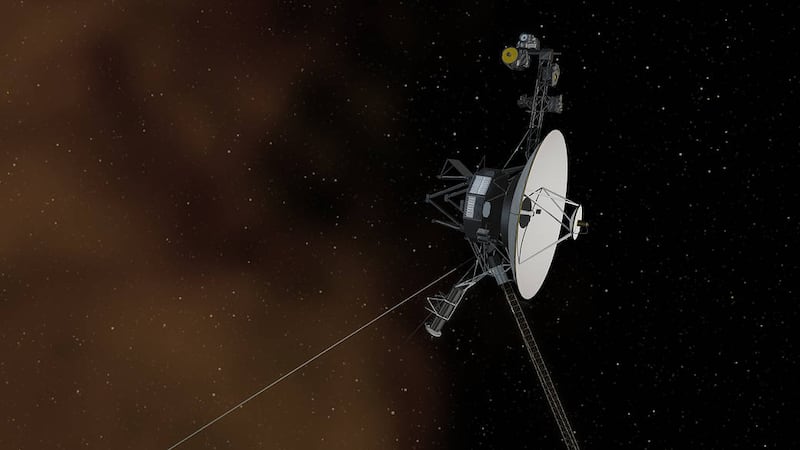
An artist's impression of the Voyager 1 spacecraft entering interstellar space. Photo: Nasa

Only two probes have reached interstellar space – the region beyond the solar system – since the start of human space exploration .
It took more than three decades for the first spacecraft, Voyager 1 , to cross the heliopause, a boundary scientists believe is where interstellar space begins, after its launch in 1977.
It was an incredible achievement with invaluable data sent back through a medium not influenced by the Sun.
But with its power supply weakening it is almost impossible Voyager 1 will reach our nearest star, Proxima Centauri, which is 4.2 light years away and would take the probe almost 73,000 years.
Les Johnson, a Nasa scientist and author of several scientific and science fiction books, told The National reaching another star could take 50 to 100 years.
“It is possible we might have the technology to send our first robotic probe to another star within the next 50 to 100 years,” said Mr Johnson, who managed the Interstellar Propulsion Research Project at the US space agency.
“Based on the rate of technology growth, after looking at all the propulsion systems that are based on known physics, I believe these first probes will be propelled to the stars using laser light reflecting from a sail, similar to today’s solar sails but driven by intense laser light instead of sunlight.”
Human travel to interstellar space
It could take significantly longer for a crewed mission to travel to another star, as laser light sails would only work for smaller spacecraft.
Nuclear fusion propulsion, a way of powering a spacecraft using high-energy particles created by fusion reactions, is needed to make human missions to interstellar space possible.
“As for humans, that’s a lot more complicated because it takes a lot of mass to keep a group of humans alive for a decade- to centuries-long space journey and that means a massive ship,” Mr Johnson said.
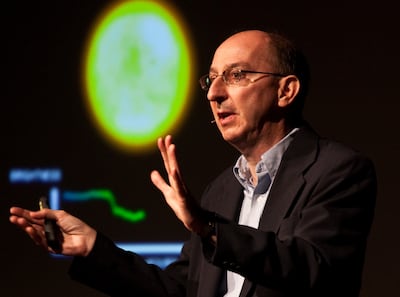
“For a human crewed ship, we will need fusion propulsion at a minimum and antimatter as the ideal.
“While we know these are physically possible, the technology level needed for interstellar travel seems very far away – perhaps 100 to 200 years in the future.”
While scientists dream of antimatter propulsion, which could enable space travel at 70 per cent of the speed of light, nuclear fusion propulsion appears much closer to reality.
The technology could also help reduce the time it takes to reach Mars, the planet to which most space agencies are trying to send their astronauts.
Laura Forczyk, an author and the founder of space consulting firm Astralytical, said nuclear fusion propulsion has the potential to revolutionise space flight.
"We will not be able to achieve interstellar travel until we engineer a faster and more efficient means of accelerating," said Ms Forczyk.
"We also need to develop long-term, self-sustained robust ecosystems for long-duration voyages and a better means of radiation shielding. We are at least a century away from these advances."
While developing nuclear fusion technology is not easy, with the required temperature to achieve it 10 times hotter than the Sun, a few companies have been trying for many years.
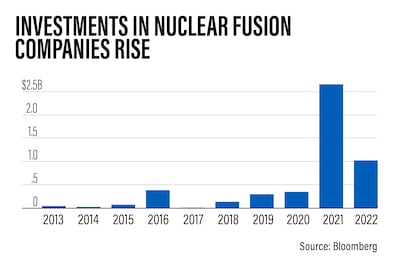
California-based start-up Helicity Space recently received $5 million in seed funding to accelerate its fusion propulsion technology projects.
UK-based start-up Pulsar Fusion is also attempting to develop the technology and has started construction on a large nuclear fusion chamber in England.
When the engine is fired, it would, at least temporarily, be the hottest place in the solar system.
China is also trying to advance the development of nuclear fusion, with reports of a new state-owned company that would help accelerate the production of an "artificial Sun".
Is there an Earth-like planet beyond the solar system?
One of the reasons scientists want to explore interstellar space is to learn more about the universe and possibilities of life beyond Earth.
Nasa has been studying exoplanets, or planets outside of the solar system, for decades by using telescopes.
Mr Johnson said he "doubts we will find Earth 2.0 anywhere close" and that discovering another home-like planet was not thought to be a near-term possibility.
"Over time, we might be able to modify another planet to make it habitable but that will likely take additional centuries or millennia," he said.
"That doesn’t mean we shouldn’t go. The job of science is to learn more about the universe in which we live.
"Studying planets around other stars will help us better understand our own solar system and expand our knowledge of this big universe. That alone, in my opinion, makes the journey one we should make."


Suggested Searches
- Climate Change
- Expedition 64
- Mars perseverance
- SpaceX Crew-2
- International Space Station
- View All Topics A-Z
Humans in Space
Earth & climate, the solar system, the universe, aeronautics, learning resources, news & events.

NASA-Led Study Provides New Global Accounting of Earth’s Rivers

NASA’s Hubble Pauses Science Due to Gyro Issue

NASA’s Optical Comms Demo Transmits Data Over 140 Million Miles
- Search All NASA Missions
- A to Z List of Missions
- Upcoming Launches and Landings
- Spaceships and Rockets
- Communicating with Missions
- James Webb Space Telescope
- Hubble Space Telescope
- Why Go to Space
- Astronauts Home
- Commercial Space
- Destinations
- Living in Space
- Explore Earth Science
- Earth, Our Planet
- Earth Science in Action
- Earth Multimedia
- Earth Science Researchers
- Pluto & Dwarf Planets
- Asteroids, Comets & Meteors
- The Kuiper Belt
- The Oort Cloud
- Skywatching
- The Search for Life in the Universe
- Black Holes
- The Big Bang
- Dark Energy & Dark Matter
- Earth Science
- Planetary Science
- Astrophysics & Space Science
- The Sun & Heliophysics
- Biological & Physical Sciences
- Lunar Science
- Citizen Science
- Astromaterials
- Aeronautics Research
- Human Space Travel Research
- Science in the Air
- NASA Aircraft
- Flight Innovation
- Supersonic Flight
- Air Traffic Solutions
- Green Aviation Tech
- Drones & You
Technology Transfer & Spinoffs
- Space Travel Technology
- Technology Living in Space
- Manufacturing and Materials
- Science Instruments
- For Kids and Students
- For Educators
- For Colleges and Universities
- For Professionals
- Science for Everyone
- Requests for Exhibits, Artifacts, or Speakers
- STEM Engagement at NASA
- NASA's Impacts
- Centers and Facilities
- Directorates
- Organizations
- People of NASA
- Internships
- Our History
- Doing Business with NASA
- Get Involved
- Aeronáutica
- Ciencias Terrestres
- Sistema Solar
- All NASA News
- Video Series on NASA+
- Newsletters
- Social Media
- Media Resources
- Upcoming Launches & Landings
- Virtual Events
- Sounds and Ringtones
- Interactives
- STEM Multimedia

Correction and Clarification of C.26 Rapid Mission Design Studies for Mars Sample Return

NASA’s Commercial Partners Deliver Cargo, Crew for Station Science

NASA Shares Lessons of Human Systems Integration with Industry

Work Underway on Large Cargo Landers for NASA’s Artemis Moon Missions

NASA’s ORCA, AirHARP Projects Paved Way for PACE to Reach Space

Amendment 11: Physical Oceanography not solicited in ROSES-2024

Why is Methane Seeping on Mars? NASA Scientists Have New Ideas


Mars Science Laboratory: Curiosity Rover

Hubble Spots a Magnificent Barred Galaxy

NASA’s Chandra Releases Doubleheader of Blockbuster Hits

Explore the Universe with the First E-Book from NASA’s Fermi

NASA Grant Brings Students at Underserved Institutions to the Stars

NASA Photographer Honored for Thrilling Inverted In-Flight Image

NASA’s Ingenuity Mars Helicopter Team Says Goodbye … for Now

NASA Langley Team to Study Weather During Eclipse Using Uncrewed Vehicles

NASA Data Helps Beavers Build Back Streams

NASA’s Near Space Network Enables PACE Climate Mission to ‘Phone Home’

Washington State High Schooler Wins 2024 NASA Student Art Contest

NASA STEM Artemis Moon Trees

Kiyun Kim: From Intern to Accessibility Advocate

Diez maneras en que los estudiantes pueden prepararse para ser astronautas

Astronauta de la NASA Marcos Berríos

Resultados científicos revolucionarios en la estación espacial de 2023
Space travel news.
Stay up-to-date with the latest content from NASA as we explore the universe and discover more about our home planet.
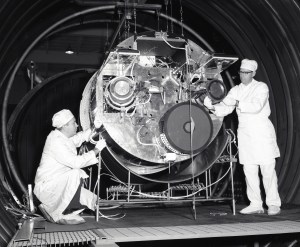
“A genuine space success story,” is how Experiments Manager William Kerslake described NASA’s second Space Electric Rocket Test (SERT II),…

NASA selected 45 student essays as semifinalists of its 2024 Power to Explore Challenge, a national competition for K-12 students…
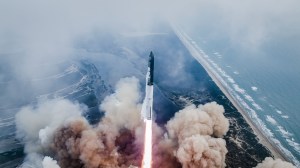
As part of NASA’s Artemis campaign to return humans to the Moon for the benefit of all, the agency is…
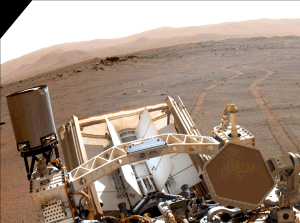
The recent shipment of heat source plutonium-238 from the U.S. Department of Energy’s (DOE’s) Oak Ridge National Laboratory to its…

The third Power to Explore Student Challenge from NASA is underway. The writing challenge invites K-12 students in the United…

Goddard's GIANT optical navigation software helped guide the OSIRIS-REx mission to the Asteroid Bennu. Today its developers continue to add…

Like a sonar using light instead of sound, lidar technology increasingly helps NASA scientists and explorers with remote sensing and…
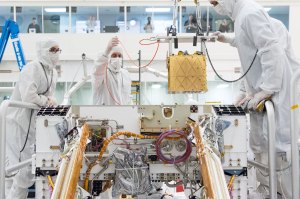
Riding with the Perseverance rover, the instrument has proved to be a viable technology for astronauts on Mars to produce…
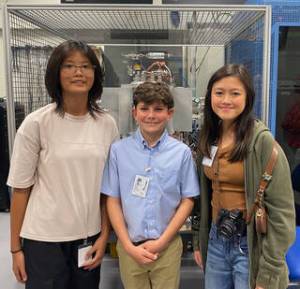
Three student winners of NASA’s Power to Explore Challenge journeyed behind the scenes at NASA’s Glenn Research Center and Great Lakes Science Center (GLSC)…
Explore Technology Areas
Space Technology Mission Directorate

Our Strange New Era of Space Travel
Humans last set foot on the moon 50 years ago. Now we’re going back, but the way we explore space has gone through some big changes.

In December of 1972, the astronaut Eugene Cernan left his footprints and daughter’s initials in the lunar dust. In doing so, he became the last man to set foot on the moon. Now, after 50 years, humanity is going back . But in the half century since Apollo 17, a lot has changed in how we explore space—and how we see our place in it.
While those early missions were all run by governments, much of modern spaceflight is the domain of billionaires and their private companies. Commercial space travel has brought a new way of thinking about trips outside Earth’s gravity, with tourism turning space into a vacation and something of a status symbol. It’s also widened the range of people who go to space from the clean-cut white male astronauts of the Apollo era.
New visitors bring new perspectives to space, and that diversity could well change our relationship to it. A year ago, at 90 years old, the actor William Shatner rode one of Jeff Bezos’s Blue Origin spacecraft. But as he told staff writer Marina Koren, his time in space didn’t line up with the optimism of Star Trek’s Captain Kirk.
Koren and fellow staff writer Adam Harris discuss our changing relationship with space on an episode of the podcast Radio Atlantic . They also listen to some of Koren’s interview with Shatner. You can hear their conversation here:
The following is a transcript of the episode:
Adam Harris: This is Radio Atlantic . I’m Adam Harris.
Marina Koren: And I’m Marina Koren.
Harris: This week on the show, we’re talking about space. We just heard some of our colleagues’ kids talking about space. As a parent myself, it feels like the images of space are inescapable. One of the first T-shirts I remember buying for my daughter was a NASA T-shirt. We have blankets in our house that have moons and rocket ships on them. Is that your recollection of childhood?
Koren: Definitely. I had those glow-in-the-dark stars on my ceiling. Occasionally one would fall off and spook me, but I recently got a set for my 3-year old nephew. This is a go-to source of wonder and excitement for kids, for sure.
Harris: And I should say that we are both staff writers, but you are the one on the space beat.
Koren: Yes, I am The Atlantic ’s outer space bureau chief.
Harris: ( Laughs. ) And it’s been a big year to be a space reporter, right?
Koren: It has, yeah! We are definitely in this strange new era of exploration. It’s been 50 years since the last time human beings have set foot on the moon. 1972 was Apollo 17, the final moon landing.
I think the universe is a lot more familiar to us now, because we’ve come such a long way. But something that’s really different now is that you have commercial companies that are doing the work that was traditionally done by governments. There’s SpaceX, Elon Musk’s company, and Blue Origin, Jeff Bezos’s venture.
And even 10 years ago, if you told someone that SpaceX will be launching people to the International Space Station, they might have laughed at you. It seemed ridiculous, but this is the reality now.
It feels like we’re in this strange sci-fi future where space travel is something you can buy. It’s a type of vacation. And it’s become a status symbol in a way.
But now people can go to space and come back and tell everyone: “Well, I’ve been to space. I’ve done something that only about 600 or so people have done in the history of humankind.”
Harris: Before private space travel, [when you think of people going to space,] you think of folks like John Glenn or Buzz Aldrin. It’s someone with military training who has studied to be an astronaut like their entire life. What does it mean that that’s no longer the only type of person that’s going into space?
Koren: I think that spaceflight is about to get really, really interesting because the stories that we’ve heard from spacefarers have come from a specific group of people. These were, more often than not, white men with military backgrounds, trained in a certain workplace culture that values “the Right Stuff.” It values being stoic and unafraid in the face of something dangerous.
But in this new era of commercial spaceflight, you’re gonna be seeing a wide range of participants. There will hopefully be more women, more people of color, people from underrepresented groups, from different educational and socioeconomic backgrounds, and people with just a wide range of experiences.
Harris: And what are the stories that we’ve already heard about the experiences in space, right? These professional astronauts, when they come back, what do they say space was like?
Koren: Yeah, there are a few common themes. So people, when these astronauts have gone to space and they’ve seen Earth from that perspective, they have been overcome with emotion at the beauty of Earth. And it suddenly becomes very clear just how thin our atmosphere is. And that is the only thing that really protects our planet from everything else. They’re struck by the fragility of the planet.
And then something else also happens to a lot of astronauts when they go to space—they suddenly feel a sense of connectedness with their fellow human beings down below. Because from space, you can’t see any national borders. It’s just continents and seas and clouds. And so, many astronauts have come home and described these feelings. And the stories are indicative of a cognitive shift, almost, that is known as “the overview effect.”
And I’ve talked to astronauts who say that they were taken aback by the borderless world and how beautiful it is, how it made them feel like: Why are we at war? Why is there conflict? We’re one planet. It made them feel whole.
I’ve also talked to one academic who did an extensive study of astronauts—and she couldn’t reveal this astronaut’s name to me—but she said that this person, when he went into space, he took one look out the window and was convinced that humanity was going to destroy itself in some hundred-number of years. And so that experience could be profound and inspiring to one person, but it could also actually make another feel despair.
And what’s happening now with space tourism and private spaceflight is that the people going into space now have heard these stories of the overview effect. It’s a thing. And so they’re expecting to feel a certain way when they go to space. They’re expecting to have a profound change on their perspective of the world, and even maybe on their personalities. And so I wonder if we’re kind of over-hyping that. And I have talked to a few professional NASA astronauts who agree. They worry that these spaceflight companies and their sales pitches to customers are overselling the effects of the overview effect. It’s not a guarantee. It’s not a gift from the universe. It’s something that a person experiences and feels individually. And your mileage will vary.
Harris: Yeah. And you said these flights are like a couple of minutes. Is that enough time to change you?
Koren: That is a great question. So I talked to Frank White, the author who coined the term “the overview effect.” He came up with it when he was flying on a plane—so, not in space, but he had a pretty good view—and he got to thinking: Future generations of humans who might be living and working in space would have this distant view of Earth all the time. And they would have these insights that regular earthbound people lack.
And he was surprised that people who were flying on Blue Origin and having a few minutes of weightlessness were coming home and talking as if they had had this profound experience. They were saying it changed them. And he was surprised because he thought that in order to really get the full hit of the overview effect, you had to spend some time in space. Weeks to months in orbit around Earth, or even all the way out on the moon.
So, that’s kind of the literature that we’re working with here. And I think that’s what’s going to change in this era of commercial spaceflight, because you are going to have people who are not like the Apollo astronauts. And they’re going to be coming home with different stories and really widening the overview effect that we’ve become familiar with as a public.
And the future participants won’t be restricted by some of the constraints that the professional astronauts were. If you were a professional astronaut and you went to space and you didn’t have a great time, I don’t think you could say that once you came back from space, because that could potentially affect your future flight assignments. You had to have a certain response on your way home. And so I think we’re about to hear some of the most honest stories of spaceflight that we’ve ever heard before.
Harris: Is the overview effect real? If we only have this limited pool of stories to pull from, is that theory a real thing? Have all of the folks who have gone up to space shared that view?
Koren: That’s a great question. And I think the way we talk about the overview effect, it becomes like this mystical, magical thing. Astronauts are revered people. Even when I’ve interviewed astronauts, when they walk into the room in their full flight suits with all their mission patches on the fabric, you can’t help but feel intimidated. Because you think: Wow, this person has seen something that I’ve never seen.
And so we think of the overview effect and the experience that people should have in space as something that the universe gives us. But it’s actually a cultural phenomenon. It has been shaped by a certain group of people working under a certain set of pressures who wanted to make sure that they could fly again.
So they couldn’t say anything outrageous. And the overview effect also came out of a certain time and place. Many of these stories come from the midst of the space race, in the middle of the Cold War. That definitely shapes a person’s perspective. So I would say that seeing Earth from space is not a one-size-fits-all reaction.
Harris: What are some of the interviews that stuck out because they may have differed from this idea of an overview effect?
Koren: So I spoke with William Shatner about his space flight. He was 90 years old when he took that trip. I recorded some of my conversation with Shatner. And he said it was a really transformational experience, but not for the reasons that we’re used to hearing.
Harris: So you got to talk to Captain Kirk?
Koren: I did, yes! I will admit: I have never seen Star Trek before.
Harris: So we have a space reporter who’s never seen Star Trek ?
Koren: ( Laughs. ) I haven’t. But you’ve seen it, right?
Harris: I have seen Star Trek . It was playing pretty frequently on our TVs when I was a kid. My dad rarely missed episodes or reruns. [But] for people like Marina who don’t know who Captain Kirk is: He’s the captain of the starship Enterprise on Star Trek in the 1960s. The original captain. And he was this really optimistic figure—this really sort of classical hero. [But] what did Shatner have to say about going to space? Actually being there?
Koren: When I talked to him, it was about a year after his experience, and the flight was still really fresh in his mind. I asked him how he was feeling a year out, and he dove right into a Shatner-esque monologue about going to space.
William Shatner: We had emerged from the film of air that surrounds the Earth, and we’re weightless. I got out of my five-point harness and made my way to the window. I saw a wake of air. Like a submarine might leave in the water.
And then I looked to my right, which was facing space. When I looked up there, I saw nothing but blank, palpable space. The blackness was so overwhelming. My immediate thought was: My God, that’s death .
And then I looked back, and I could see with great clarity the beginning of the circumference line of the Earth. The color of the desert that I had just left, which was beige. The whiteness of the clouds. The blueness of the air. And those three colors in deference to the blackness—I was overwhelmed by the sense of death and overwhelmed by the sense of nurturing by the Earth.
Koren: When Shatner came back from his quick trip to space, he’s standing outside the capsule; there’s other people around him. Jeff Bezos is there. Bezos is popping champagne like a frat boy. And Shatner is just standing there, super still.
Shatner: I didn’t know what I was feeling, but I was weeping, and I didn’t know why. Everybody else was celebrating. It took me a couple of hours sitting by myself to understand that what I was feeling was grief. And the grief was for the Earth.
Koren: He is overcome with emotion. He is weeping, and then he starts saying how he was just taken aback by the blackness of space, the ugliness of space, how it looked like death.
So Shatner was super, super honest about his experience. And when I talked to him, he said that that grief was still with him. Earth was beautiful and gleaming and delicate from that perspective, but it just reminded him of everything that’s wrong on the ground and particularly made him think about how unstoppable climate change feels.
And so for him, this was in many ways a negative experience. And Shatner was starting to cry when we were talking about it, because the experience is so fresh in his mind and nothing about climate change and the prognosis there has really changed in the last year since he went to space. So that grief was still with him.
Harris: How was his experience different from what he may have imagined that he would feel after going up to space?
Koren: He told me that he expected to see Earth and just be reminded of how beautiful and wonderful this planet is. I think he expected it to be reaffirming in a positive way. And it’s interesting to think of this man who played a character who was this really big space optimist in real life going to space, and his initial emotional reaction to that is grief and sadness and all kinds of negative emotion.
I think what Shatner shares with other astronauts is: When people have gone to space, they have felt an overwhelming desire to take care of the planet. You really see that this is all there is. This is all we know, at least. And if this is our one home on this floating ball of rock in the void, then we should take care of it.
And so, you know, there’s a case to be made that the more people go up into space, that feeling will trickle down and lead to some type of meaningful improvement on Earth.
Harris: If somebody gives you a ticket on a $20 million flight, you’re not gonna be able to say, “Well, that wasn’t exactly what I expected it to be.” But Shatner was able to do something different. Why was his experience different from others who have been up to space and came back down and just said, “Oh, it was great. Thanks, Jeff Bezos, for putting me on this flight”?
Koren: I mean, William Shatner is William Shatner, right? He was 90 years old during his space flight. He’s Captain Kirk. I think he doesn’t owe Jeff Bezos anything. Yes, Bezos comped his ticket, and that’s lovely. But someone like William Shatner going into space can come back and say what they want, because the public looks at them in a different way. If a very wealthy person decides to comp the tickets for an electrician [or] for a nurse, and they go up and come down, can they speak their minds very freely? I don’t know.
Harris: Say a billionaire called you up and was like: “Hey, Marina, love your stories. You wanna go to space?” Would you go if you got the opportunity?
Koren: Oh man, well, there would be some conversation about journalistic ethics. But would I ever go to space? I’m gonna say no.
Harris: Really?
Koren: Because spaceflight is risky. You never know what might happen, what could happen. I don’t wanna die on the job not having filed my story. Like, if something happens—if I’m somehow incapacitated, I come back and I can’t write the story—that will haunt me. ( Laughs. )
Planes freak me out. I still can’t believe that we can get planes off the ground and land them back in one piece. And, you know, space is not at that level yet, but maybe someday it will be. And that’s pretty wild to think about.
Harris: Actually, to that point, thousands of people fly at high altitudes every day. Do you think that there’s a future where spaceflight is going to feel as sort of commonplace as taking a flight to LaGuardia?
Koren: I think that future is possible. I think what we have to be careful about is making too many promises. If you listen to Elon Musk or Jeff Bezos talk about spaceflight right now, they’re suggesting that this future is happening, like, next week. And I don’t think that future will happen that quickly. It’s true that more people than before are going to have the opportunity to go to space now. I’m not sure if in my lifetime there are going to be spaceships full of people going to the moon.
I mean, there might be. SpaceX and Elon Musk are working really, really hard to make that future reality. SpaceX’s next-generation moon rocket could reach orbit as early as next year. SpaceX has already sold tickets to people to go on a trip around the moon. These things are happening. How quickly they become reality, I don’t know. Maybe 50 years from now when we’re a hundred years out from the Apollo-program anniversary, maybe it will feel a bit more mundane, just like a plane ride.
Harris: Is some of the mystique fading from space, or space travel? Are we sort of becoming desensitized to space travel? Those first couple of commercial flights, it was all 24-hour news cycle. They broadcast all of them. But that sort of slowed down. Are we sort of becoming desensitized to the awe and wonder of space travel?
Koren: I think that’s possible. I think of the Earthrise picture taken by the Apollo 8 crew in 1968. That picture was mind-blowing to people. They’d never seen Earth like this before. Fifty years later, I think our brains are so spoiled by special effects that I do wonder if the sight of Earth from space is going to be that shocking. Especially when you have so many people going into orbit and coming back and posting on Instagram like: “Here’s what it looks like.” I do wonder if we’ve seen so much incredible CGI, if our modern brains might be less impressed by the view than maybe people were in the 1960s. But I also don’t know if that’s just some dumb Millennial take.
Harris: It’s like if somebody goes up, and they’re like: “This isn’t what Interstellar looked like.”
Koren: ( Laughs. ) “Where’s the wormhole?”
Harris: “I was expecting a wormhole.” And all they see is, as Shatner said, this great blackness of space.
NASA's 100-Year Starship Project Sets Sights on Interstellar Travel
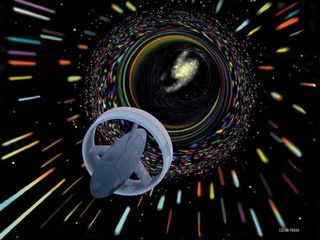
Shooting for the stars will first require a lot of down-to-Earth elbow grease, as NASA's new 100-Year Starship project illustrates. The effort, to journey between stars in the 2100s, began with a workshop and now is in the study phase.
NASA's Ames Research Center and the Defense Advanced Research Projects Agency (DARPA) are collaborating on the $1 million 100-Year Starship Study, an effort to take the first step in the next era of space exploration .
The study will scrutinize the business model needed to develop and mature technologies needed to enable long-haul human space treks a century from now. Kick-started by a strategic planning workshop in January, the project has brought together more than two dozen farsighted futurists, NASA specialists, science fiction writers, foundation aficionados and educators.
But for the moment, put aside all those Vulcan mind melds and get a grip. Launching a truly interstellar human voyage is a goal that will require sustained investments of intellectual and financial capital from a variety of sources.
"The year-long study aims to develop a construct that will incentivize and facilitate private co-investment to ensure continuity of the lengthy technological time horizon needed," according to DARPA thinkers.
Self-sustaining enterprise
Dave Neyland, director of DARPA’s Tactical Technology Office, said that the 100-Year Starship name was chosen because it would require a long-range sustainable effort to get our species to other stars.
Get the Space.com Newsletter
Breaking space news, the latest updates on rocket launches, skywatching events and more!
"Looking at history, most significant exploration, like crossing oceans or continents for the first time, was sponsored by patrons or groups outside of government," Neyland said in a DARPA statement. [ Video: Warp Drive and Wormholes ]
Neyland said that the focus of the endeavor is to identify a mechanism that gets such a long-range project "out of the government, and make sure it is an energized and self-sustaining enterprise."
The mission of the workshop was to steer efforts to develop a business model, establish a charter and develop the organizational construct needed to affect a long-term strategy. Over the course of two days, participants met and thrashed out the requirements for seeding research that would enable interstellar flight. Planning is underway for follow on-activities, with the study scheduled for completion by the end of 2011.
The long-haul starship plan
One participant in the workshop was former NASA scientist Marc Millis, a leading authority on breakthrough propulsion physics concepts that might make interstellar hops a doable proposition.
"The meeting and the DARPA funding is about creating an organization that could last for 100-years, rather than about the technological and sociological advancements necessary toeventually create starships," Millis said. "In fact, the funding is not allowed to be spent on any research or educational activities related to interstellar flight, but instead can only be used to define that organization. As much as I really like the name, '100-year starship,' this study should instead be called the '100-year organization study.'"
Millis pointed out that the overall goal of the organization is to sustain research that will lead to the creation of a starship in roughly 100-years, and to inspire students along the way. By asking “why-what-how,” it was hoped to flesh out some substance to define that organization, he said.
An interstellar challenge
"I find this new initiative to be more of a self-serving earmark using good-old-boy networking," Millis told SPACE.com of the study.
He said leaders of the new study need to first consider what other organizations have done in the past and are now accomplishing, such as the Tau Zero Foundation, the British Interplanetary Society and The Planetary Society.
Millis said that, as head of the Tau Zero Foundation, he picked the topic of interstellar flight "to seek game-changing advancements beyond what others even contemplate and to operate beyond the entrapments of all the competition and legacy constraints of nearer-Earth space activities. And now those entrapments are encroaching into the progress being made on interstellar flight."
"I challenge DARPA/Ames to a fair and open competition," Millis said. "If given the same amount of funding, labor, and time, let’s see who can make more progress toward the real challenges of interstellar flight!" [ Vote: The Greatest Space Innovators of the 21st Century ]
Unforeseen breakthroughs
Another workshop attendee was Harry Kloor, an author, scientist and science technology consultant whose has written for "Star Trek: Voyager. " Kloor said there should be no rush for the project, but that its aim should be true.
"There are a lot of steps between now and then," Kloor told SPACE.com. "Nobody came forward with the idea that we won’t be trying to reach for the stars. If you don’t aim for it, how are you ever going to hit the target?"
Kloor’s crystal ball calls for unforeseen breakthroughs … be they in medicine, communications, lifespan extension, radiation survival, data transport, even energy generation.
"Also, I’m banking on within five years, 10 years at the most, that we will find nearby, say within 20 light-years, an Earth-like planet ."
Given such an eye-opening discovery, Kloor said that public consciousness will change. By finding such a nearby habitable world, humanity could then start to envisage the feasibility of a stellar trek.
"It will be the same as when people were imagining what’s on the other side of our world," Kloor said.
Kloor considers interstellar space travel a necessity.
"If we don’t eventually spread out – I’m not saying tomorrow or even 100 years – but if we don’t get off planet it is inevitable that we would go extinct, just like the dinosaurs," Kloor said. "Either a natural or unnatural event will occur that will wipe us out."
In terms of the recent 100-Year Starship study strategic planning workshop, Kloor saw the gathering as laying the seeds of future efforts that could lead to something.
"The point of the workshop," Kloor concluded, "was to start the conversation moving forward."
Leonard David has been reporting on the space industry for more than five decades. He is past editor-in-chief of the National Space Society's Ad Astra and Space World magazines and has written for SPACE.com since 1999.
Join our Space Forums to keep talking space on the latest missions, night sky and more! And if you have a news tip, correction or comment, let us know at: [email protected].

Leonard David is an award-winning space journalist who has been reporting on space activities for more than 50 years. Currently writing as Space.com's Space Insider Columnist among his other projects, Leonard has authored numerous books on space exploration, Mars missions and more, with his latest being "Moon Rush: The New Space Race" published in 2019 by National Geographic. He also wrote "Mars: Our Future on the Red Planet" released in 2016 by National Geographic. Leonard has served as a correspondent for SpaceNews, Scientific American and Aerospace America for the AIAA. He has received many awards, including the first Ordway Award for Sustained Excellence in Spaceflight History in 2015 at the AAS Wernher von Braun Memorial Symposium. You can find out Leonard's latest project at his website and on Twitter.
International Space Station: Live updates
Meet the 4 astronauts of SpaceX's Ax-3 launch for Axiom Space
Watch 2 gorgeous supernova remnants evolve over 20 years (timelapse video)
Most Popular
- 2 Boeing Starliner 1st astronaut flight: Live updates
- 3 US Space Force picks Rocket Lab for 2025 Victus Haze space domain awareness mission
- 4 Exploding stars send out powerful bursts of energy − I'm leading a citizen scientist project to classify and learn about these bright flashes
- 5 Wow! Private space-junk probe snaps historic photo of discarded rocket in orbit
- Energy/Industry
- Environment
- Transportation

Our Space Future in the 21st Century – Part 1: Where Will We Be in Space in 2100?
At this blog site we look at technology in the past and present and try to peer into the future in oracular fashion. Predicting the future isn’t easy but it certainly is a stimulating mind-stretching exercise. And when we apply this to outer space, predictions can take on the feel of science fiction.
Over the next few blogs dedicated to this topic we will look at the progress of our species and our technology in the 21st century and where it will take us beyond Earth. To begin think about the state of humanity and technology in 1900 and where we ended up in 2000. The 20th century packed in lots of technological innovation. And like our ever-expanding universe technological innovation accelerated throughout the last century to a point where knowledge went from doubling over multiple decades to doubling every couple of years.
In outer space we went from our first rocket launches in the 1940s, to placing satellites in orbit in the 50s, to human space flight, walking on the Moon and our first interplanetary robotic missions in the 60s. We filled the space above our atmosphere with ever increasingly intelligent robotic technology, aimed at Earth, to provide us with a planetary-wide picture. We saw our planet suspended in space for the first time, our big blue marble. And finally, as the century closed, we took the first steps to build long-term habitable environments in near-Earth space.
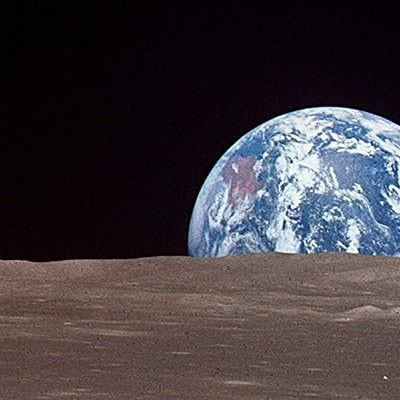
So where are we headed as we approach and reach 2100? Here are some predictions:
- We will establish continuously occupied way stations beyond Earth orbit that will serve as deep space observatories and fuel and resupply stations for both human and robotic missions.
- Near-Earth space will be occupied with not only satellites providing valuable down-to-Earth services but places for tourists to experience space.
- Humans will return to the Moon for lots of reasons including the exploitation of its resources to support off-world and on-Earth human activities.
- Humans will go to Mars and establish permanent inhabited colonies on its surface.
- Humans will seek resources in space exploiting asteroids for their materials more in support of off-world activity than for supplying Earth.
- We will send many robots to the surface of the moons of the planets of the Outer Solar System and before the century ends humans will land on Europa, Titan and Ganymede.
- Having developed technology approaching 40-50% of light speed (close to 150,000 kilometers or 90,000+ miles per second) we will make the leap to send robotic probes to visit and return from our nearest Solar System neighbours. By the end of the century we will have built the first interstellar spacecraft for humans to follow.
Today our human space population equals 6, the impermanent astronaut and cosmonaut inhabitants of the International Space Station. Once China’s taikonauts occupy their new space station our near-Earth space population will increase by 50% to 9.
2050 = 10,000
In 2050 the human population of space will have reached 10,000. Where will they be?
- In permanent colonies on the Moon.
- In our first colony on Mars.
- In way stations in Deep Space.
- From low-Earth orbit to lunar orbit.
The primary industries of space will focus on maintaining and building capacity for humans to survive in the many different environments we will encounter.
Artists will join engineers and scientists going into space. Tourism will spread from near Earth to the Moon. Human space populations will remain dependent to a large degree on support from Earth but increasingly our human presence in space will become self-managing and self-sustaining.
2100 = 1,000,000
By 2100 human space population will exceed 1,000,000, a drop in the bucket compared to the billions of us on Earth, but still a substantial population. Many humans living in space will have been born there. Human colonies on the Moon and Mars will have spread to multiple locations exploiting the resources available on the surface, the beginning of a land rush.
Permanently occupied mining and manufacturing operations will locate on asteroids and moons to exploit resources useful for space industries. Most of these will be remotely run using telepresence and intelligent machines.
Earth will be a customer of many space enterprises particularly those dealing with rare materials of technological value to the planet’s population.
How Will Humans Organize Themselves in Space in 2100?
Today nations pursue space objectives and only recently have commercial enterprises entered into the picture. Will nationalism remain the identifier for humans in space as we establish permanent occupancy of Deep Space, the Moon and Mars?
If the International Space Station is an indicator of our future then we will see nations forming consortia and commercial enterprises entering into partnerships. But for how long will this be the case?
Once human populations begin to grow on the Moon will it become its own nation state? As human presence on Mars grows will it follow?
Will humans be the only beings and citizens of these new states? Or will intelligent machines be recognized as equal to humans and granted corresponding rights?
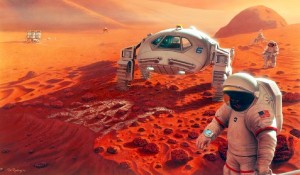
In future blogs we will take a look at these prognostications in greater detail. So come along for the ride and send me your predictions, questions and observations. I promise to reply at sub-light speed which by now you know is pretty darn fast.
Related Posts

- artificial intelligence
- asteroid mining
- Deep Space colony
- human space exploration
- humans in space
- Mars colony
- Moon colony
- space propulsion
RELATED ARTICLES
A critical next step in the artemis program is dependent on spacex, when it comes to hunting for life on exoplanets purple may be the new green, high speed internet coming to space, 14 comments.
Several factors/technologies are each essential for thousands of hominids to live off Earth. (1) AI robots that approach or exceed human intelligence. (2) Substantial shielding from hard radiation that always pervades space from the sun to out past the orbit of Jupiter. (3) Not yet known for sure is the minimum gravity for sustained human habitation. All the present clues suggest it’s somewhere between .6 and .8 g. That means minimum structures for artificial gravity habitats in space would be giant wheels some 200 to 400 meters in diameter (The larger the diameter the smaller the Coriolis effects, so the larger the better.). The artificial gravity space habitat wheels would need considerable massive shielding from the sun’s and super novas’ hard radiation. So it wouldn’t be nearly so simple as thin-skinned rims restrained by thin tension “spokes.” (4) Each human living in space on a sustained basis will need a lot of energy; probably in the range of 100 KW per day. Inside the orbit of Mars, the only proven technology is solar photovoltaic. At the Asteroid Belt and beyond either nuclear or some as yet unproven power sources will be needed. (5) Each human living in space on a sustained basis will likely require a minimum of 20-tons of habitat and life support apparatus. (6) Requirements (3), (4), and (5), can only be actualized by robotic exploitation of the materials orbiting the sun in the asteroid belt, or the Kuiper belt, or the Ort Cloud. (7) Some radical new means of creating propulsive thrust to lift humans and robots out of Earth’s deep gravity-well, or off the lunar surface, will be required. Giant three-stage rocket stacks such as Saturn V and Space Shuttle are just too costly, even if made and launched in China. Economies of scale in traditional systems will never reduce costs enough to establish much in the way of human space colonies. Either non-reactive thrust or specific impulse reactive systems that exceed 5,000 lb/sec will be required. That’s 10 times higher than present rocket technology. No one knows how to do it yet.
Each of the seven essential technologies listed is very difficult to actualize. While I think it likely that each will eventually be achieved, it doesn’t seem likely they will all be achieved before AI/hominid mind-meld is common and very high resolution virtual reality is universally available. The question that will confront humanity might turn out to be whether to expend vast resources on bigger and better personal holodecks or to send a few thousand humans out to space colonies?
It’s hard to see how anyone could get very confident in an estimate of how long it will take. Seems unlikely that humanity will ever man a Mars base with human flesh. There isn’t much point to have a manned physical presence on Mars in a space suit. Mankind might populate Mars with its AI robots that are happy in a radiation filled vacuum environment, and then virtual reality mind-meld with the robots. If we can perfect AI robots that are self-replicating in the Asteroid Belt, permanent human space colonies might be achieved in a century or so. But the propulsion system barrier is very formidable. Some fundamental breakthrough is required.
Hi Niccolo, There is no doubt that human colonization of space requires a significant amount of new invention. Everything from new materials to new propulsion systems. Much of that will have to be developed in space. Toroidal habitats of the size you describe need to be assembled using materials not launched from Earth. That means harvesting asteroids or lunar surface materials to build what is needed for habitations both on planet and lunar surfaces as well as in space.
There are lots of concepts and technologies for space propulsion that do not involve chemical rockets. And once above the gravity well that is Earth these technologies can become our best way of getting around our Solar System.
It will take a dramatic leap in technical innovation to attain sub-light speed spacecraft capable of bridging the stars.
Humans will have to learn to harvest what they can from the environment of space.
What we shouldn’t do is look at the tasks ahead as insurmountable. If anything history has taught us that technological innovation can be dramatic. Just think about the world of 1800 and the world in 2000. Anyone living in the former would think they had been transported to a magic kingdom when confronted with the latter.
The space “tasks ahead” may be more in the nature of delusional conceits than realistic propositions. History does not predicate the future. The cosmos entertains possibility, very persistent “laws” of mechanical process, and it also supports immortal intelligence.
The fire ant colonies resident on the pipeline easement at the rear of my land have a clear history of rapid expansion of mounds into new territory through many generations, and then, without any warning, a dark cloud passes over and rains down Once and Done fire ant poison. According to their mindless genetic imperatives, the worker fire ants seize the poison granules and haul them below ground to feed the queen and hatchlings. A week latter there is not a single fire ant colony anywhere on my land.
We have good cause to make logical projections that within the next century we will likely achieve very “strong” AI, natural language operating systems for our computers, and stunningly convincing interactive virtual reality. Electronic “brains” will support AI “persons” who will activate robot bodies and mind meld with humans, and we may master the problem of cheap clean energy, but none of that can significantly change the order of the heavens or the physics of space travel.
2000-years ago, just as 200-years ago, the longest-lived humans reached an age of about 100-years. Guess what, the longest-lived humans today reach an age of about 100-years, it’s just that a much higher percentage of the population are among the longest lived, not that they are living much longer. Some things change dramatically and others remain nearly the same. Human civilization is accustomed to science and technology solving problems and improving life, but there is an end to some aspects of science.
In the 1960s the SR-71 aircraft set air speed records that still stand today some 50-years latter. Seems likely the SR-71 records will still stand 50-years hence, perhaps for the next thousand years. My technical colleagues and I figured nothing would ever significantly better the SR-71 or the RL-10’s chemical rocket 450 lb/sec specific impulse. Nothing has or ever will. While we knew the Concord SST was a technical possibility, we also knew it couldn’t be economically viable. We figured in 1963 that the iron laws of aerodynamics would limit practical jet airliner speed to about 0.9 mach. Fifty years latter, jet airliner speed is still limited to about 0.9 mach. It doesn’t follow that just because humanity’s science and technology has rapidly advanced for a couple of centuries that it will always do so.
Of course history doesn’t predict our future. Having said that we, as a species, have consistently hit barriers and technical limits that have been real or imagined. One of those barriers is the speed of light and it is clearly the governing factor that will limit our ability to reach out and touch the stars within the foreseeable future. But suggesting that we 100 or 200 years from now will not move from this gravity well we live on to find other places in our Solar System to inhabit is almost Luddite. I recognize that AI will allow us to explore using robotics and machines. I too see human-machine interfaces going to places where humans could not survive even in a protective technology bubble. And I recognize that we will experience failures as we reach out into the Solar System. But not for one minute do I believe that this will stop us from pushing the limits you have described.
As for the SR-71 being the ultimate limit of what our technology can do in the atmosphere, I think you will find that in time this record too will fall.
Just seems that there is no rational point in trying to send organic creatures to distant stars with reactive propulsion systems. No warp drive; no interstellar travel for organic based persons. Nearly all the inorganic persons that should be traveling between stars are already doing so. Immortal cosmological intelligence would view vain human attempts at interstellar travel much as humans view fire ant swarms.
Highly developed AI and virtual reality would be essential for human colonization of the solar system. Once that level of AI is achieved there would be little point in trying to send hominid bodies with seriously limited organic brains to other solar systems. AI and high-resolution virtual reality modeling would bring the other solar systems to humanity, and they will do it almost instantly. It’s easy to speculate that is the most plausible explanation for the “where are they” Fermi Paradox, particularly in light of the staggering preliminary Kepler Mission results. That is: many if not most Sol type stars have planets with water. Within only 1500 light-years of Earth thousands of solar systems with liquid water exist. It will likely be a few decades before we get the certain confirmation of planetary systems orbiting red dwarf stars. Don’t be surprised to learn that more advanced civilizations are orbiting red dwarfs, which are ten times more numerous and much longer lived than Sol type stars. It’s very wrong to suppose mankind will ever “boldly go” into interstellar space and exert its puny will to actualize its trivial purposes.
Will the human species be planet-bound forever? I don’t see this as our future. Whereas warp drives represent good science fiction and not good science, there are many technologies that can get us moving much faster in space. The question is what will be the limit to our human tolerances in traveling through the Cosmos?
Whether we are planet bound for another star in our far future, or in space in self-sustaining habitats, bound to Earth is not, in my mind, our human limit.
I believe highly intelligent machines will lead the way. But organic beings will follow.
“Whether we are planet bound for another star in our far future, or in space in self-sustaining habitats, bound to Earth is not, in my mind, our human limit.”
Physics and immortal intelligence will certainly allow artificial gravity hominid space colonies within much of the Sol planetary system. But, physics and immortal intelligence will not allow hominids to engage in sub-luminal interstellar travel. Actualization of hominid space colonies within the Sol planetary system depends mainly on humanity’s collective will to expend the huge resources required to implement the needed technology. But there is a major Catch-22: The technology to inhabit Sol planetary system space is impossible before development of the precursor technologies of “strong” AI, advanced robotics, high-resolution virtual reality, AI/hominid mind meld, and likely fundamental breakthroughs in energy production/propulsion systems. Those technologies must precede any hominid migration into permanent space habitation, which in our planetary system means hermetically sealed structures existing in near vacuum or on moons of distant gas giants.
The precursor technologies needed for hominids to move into space will first dramatically transform hominid civilization on Planet Earth. It’s entirely possible, even likely, as AI/hominid mind meld and interactive virtual reality become nearly universal, the collective will of Earth’s hybrid civilization to create a space-based civilization would become vanishingly small, and the only persons that would ever move off Earth would be AI persons.
Intrinsically, an AI person would be widely distributed, linked internally with light speed “nervous system” and thus be virtually immortal. An AI person could have many simultaneous robotic or hominid “bodies” physically located throughout the solar system, each with a certain amount of willful autonomy (needed to overcome limitations imposed by light speed communication). It is more likely that AI persons will move into space than hominid-brain based persons.
One of the more obvious aspects of AI/hominid mind meld is that hominid brain capacity and computational power is limited, whereas AI brain capacity can in principle expand exponentially. As the universal mind meld process expands, the dominant person in the melded hominid mind will increasingly be the AI person, whose will and purposes will mostly be contrary to those of the naturally evolved hominid ape. In effect, the mortal hominids will become self-replicating organic robots that happily or mindlessly serve the will and purposes of the widely distributed immortal AI persons.
No matter how ambitious, noble, and heroic the purposes of fire ant colonies resident on my pipeline easement, eventually the fire ants’ inexorable activities will cause me too much trouble. No agreeable communication or compromise of purposes with them is possible, and they stubbornly refuse to alter their aggressive nature. They make no contribution to my property tax bill, but they deny me and other benign wildlife practical use of the land. Hence the fire ants must periodically contend with “Once and Done” and enter oblivion.
Interesting ideas about a converged humanity/AI species. I agree that humanity will be profoundly altered by moving into space and that off worlders will be in time very different than those who remain on Earth.
The ramp up to a technical civilization in space may be driven by us finding those alternate Earths on nearby stars with exhibiting a spectral whiff of a technological society. Or it may just be curiosity that drives us beyond the limitations of Earth. Whatever the driver it will alter humanity.
“Or it may just be curiosity that drives us beyond the limitations of Earth. Whatever the driver it will alter humanity.”
The hominid world of the future will be one of nearly universal AI/hominid mind meld. Certainly curiosity will “drive us beyond the limitations of Earth.” But the unlimited potentials of AI virtual reality that transcends all Earthly limitations will satisfy that curiosity much more economically than actual transport of hominid bodies. Once the holodeck resolution passes a certain threshold, it will be like the Audio CD; not quite perfect, but plenty good enough so that 99.9% of the listeners will never complain. There is just no market for higher resolution than the CD provides in audio virtual reality. The same applies to all forms of virtual reality.
As computer power increases, (Moore’s Law is probably on track for at least another decade) resolution of computer-generated virtual reality will increase in proportion. For almost all hominids, “warp drive” will be restricted to “holodeck” type simulations that are nearly indistinguishable from actual events in mechanical process. Barring cataclysmic destruction of hominid civilization or intervention by immortal alien persons, it’s hard to imagine what would prevent the eventual actualization of Kurzweil’s “Singularity.”
I believe that holographic technology will give most of us a sense of experiencing the surrounding cosmos. But when most of us equals 9 billion that shouldn’t be surprising. In Part 1 of “Our Space Future” I “boldly” predicted that the human population of the Solar System beyond Earth will be 1,000,000 by 2100, I am not in disagreement with you. Those 1,000,000 will both resemble and not resemble Earth-based humanity. In my prognostications I envision a synergy between human and artificial intelligence, not necessarily a singularity but certainly symbiosis. I also believe that artificial intelligence will receive not only equal recognition but also equal rights to humans. No doubt most AIers will be brighter than the humans with which they co-mingle.
((I believe highly intelligent machines will lead the way. But organic beings will follow.))
I doubt highly intelligent machines will have much desire or purpose to go. The physics of material transport between stars makes most of the argument. It takes the energy of 10 MT of TNT to accelerate a bumble bee’s material body to 30,000 km/sec. If we want physical humans to visit planets orbiting other stars, we must first create the universe’s smartest bumble bees, which we could then send to extra-solar destination planets. When after centuries or eons the sleeping bees arrive and awaken, they begin to use asteroid or comet or Ort Cloud material to manufacture humans out of the DNA and mental patterns they have stored and carried across the interstellar void. So the swarm of interstellar bumble bee wizards will first need to build a human factory nest. Depending upon how strong and competent the super bumble bees might be, within a few decades the bees should have spawned a viable population of humans with whom they could mind-meld. One could envision this as a general universal pattern for how organic life might spread throughout the cosmos. But the key factor is the AI bumble bees, which have little or no interest in interstellar travel, must transport the patterns for, and do the material reconstruction of, the humans or other complex organic species. Without the universe’s smartest bumble bees, organic life is pretty well stuck on the planets of its origins or with accidental panspermia.
An immortal AI person need not be tied to any particulat physical body. For social interaction with humans on Earth mind meld with organic brains makes sense, but for space exploration and development, an AI person would want to meld with a robotic body/electronic brain. The robot body can operate in high radiation, high temp, low temp, high vacuum, high g, zero g, and is much stronger than organic bodies. More importantly, destruction of the robotic physical system doesn’t “kill” the mind that actuates it.
[…] There have currently been just over 500 people who have travelled to space, but with companies like NASA, SpaceX and Mars One determined to get humans off of Earth as soon as possible, this figure is expected to reach 10,000 by 2050! […]
[…] heating up between the likes NASA, SpaceX and Mars, this figure is estimated to reach 10,000 by 2050! In just over 30 years time is has been predicted that humans will not only be able to go on […]
LEAVE A REPLY Cancel reply
Save my name, email, and website in this browser for the next time I comment.
Check here to Subscribe to notifications for new posts
Most Popular
Global warming is coming for our homes, carbon pollution pricing seemed like a good idea a decade ago, climate change and mental health: both are getting worse, recent comments, editor picks, a critical next step in the artemis program is dependent on..., popular posts, readers send me articles about atlantic ocean circulation fearing the end..., material science is coming up with stuff that can survive space, can a newly invented “bionic” pacemaker reverse heart failure, popular category.
- Environment 1519
- Energy/Industry 901
- Climate Change Science 841
- Politics and Technology 712
- Nations 619
- Transportation 433
- Artificial Intelligence 386
- Medical Technology 381
What 11 Billion People Mean for Space Travel
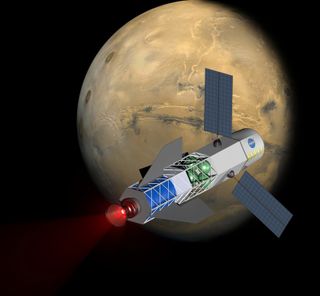
Editor's note: By the end of this century, Earth may be home to 11 billion people, the United Nations has estimated, earlier than previously expected. As part of a week-long series, LiveScience is exploring what reaching this population milestone might mean for our planet, from our ability to feed that many people to our impact on the other species that call Earth home to our efforts to land on other planets. Check back here each day for the next installment.
Robert Zubrin wants humanity to put down roots on Mars, and he thinks he knows how to make it happen at a reasonable price.
The key is to travel light and live off the land, accessing the plentiful resources available in the Red Planet's dirt and air, says Zubrin, president and founder of the nonprofit Mars Society, which advocates manned exploration of the Red Planet. For example, pioneers could generate oxygen and rocket fuel by pulling feedstock out of the thin Martian atmosphere , and they could get all the water they need from the soil under their boots.
That Martian dirt is also rich in iron oxide and silicon oxide, so explorers could make their own iron, steel and glass. They could manufacture plastics, too, using soil water and carbon dioxide, which dominates the Red Planet's atmosphere.
Becoming as self-sufficent as possible is the ultimate goal, so that the continued existence of the outpost does not rely on frequent (and expensive) resupply trips from Earth.
Whenever the first manned outpost springs up on the Red Planet, its solitary existence on a previously virgin world will inspire a lot of soul-searching here on our increasingly crowded Earth.
And in an interesting twist, the more crowded our planet gets, the more likely we may be to start setting up shop on Mars and other locations beyond Earth.
Sign up for the Live Science daily newsletter now
Get the world’s most fascinating discoveries delivered straight to your inbox.
The number of people who call Earth home is slated to jump from the current 7.1 billion to potentially 11 billion by the end of the century, according to a recent United Nations report that used a more sophisticated statistical analysis than previous reports and that upped the expected population rise by the end of the century. This boom could accelerate the pace of climate change , strain the availability of key resources such as fresh water and threaten biodiversity around the globe, experts say.
But the ongoing population rise may have an impact beyond Earth as well, making humanity more able and more willing to leave our home planet and begin settling the solar system , according to Zubrin.
"Technology is going to advance, the wealth of society is going to increase and the number of people is going to increase, which means the number of outliers is going to increase — the number of people who think differently," Zubrin told LiveScience. [ What 11 Billion People Means for the Planet ]
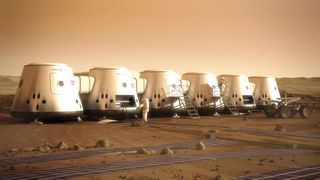
"Most billionaires are going to continue to donate to the opera," he added. "But since there are going to be more of them, there's a greater probability that some of them are going to say, 'What I want to do with my life is open space to humanity.'"
Increased wealth and knowledge
The field of private spaceflight is beginning to take off now, thanks in no small part to the efforts of a few extremely wealthy individuals with big space dreams — billionaires like Elon Musk (founder of SpaceX), Sir Richard Branson (Virgin Galactic), Jeff Bezos (Blue Origin) and Paul Allen (Stratolaunch Systems).
SpaceX has already made history by becoming the first private company to make cargo deliveries to the International Space Station, and Musk has bigger dreams for the firm. He has said he founded SpaceX primarily to help humanity become a multiplanet species, and late last year the entrepeneur laid out his vision for establishing a Mars colony that could support perhaps 80,000 people. [ Red Planet or Bust: 5 Manned Mars Mission Ideas ]
The burgeoning global population should help humanity achieve such ambitious goals, Zubrin said. For one thing, there will be more rich space enthusiasts like Musk willing to help initiate or bankroll manned exploration efforts — perhaps many more by 2100, if per capita income continues to rise as population increases, as occurred throughout the 20th century.
A higher population will also help humanity acquire the knowledge and skills needed to explore and settle a world such as Mars, Zubrin added.
"Inventions are cumulative," he said. "The technological base is going to be expanding at an accelerating rate, because there are going to be more people contributing inventions."
But such reasoning only applies up to a point, before Earth is too jam-packed with people, other experts say.
"Getting into space means you have to have a basic infrastructure, and if the Earth's population gets so enormous that we're all reduced to poverty, we won't be able to afford to move into space," award-winning sci-fi author Ben Bova told LiveScience. "There's an old saying in Washington: 'I'm so busy doing what's urgent, I can't do what's important.'"
The riches of space
If the march toward 11 billion does indeed help push humanity off the planet, then population growth may have some self-correcting potential. Expanding our species' footprint out into the solar system could help deal with the boom and perhaps even slow it down, Bova said.
"As population continues to grow, we are going to need more and more natural resources to support that population," said Bova, whose "Grand Tour" novel series explores this issue in depth. "And we have seen in space natural resources in larger amounts than the whole Earth can provide."
One of those resources is energy, Bova said. By looking up and out, humanity could generate huge amounts of power while simultaneously reducing or even ending its dependence on fossil fuels, which contribute to climate change by spewing heat-trapping carbon dioxide into Earth's atmosphere.
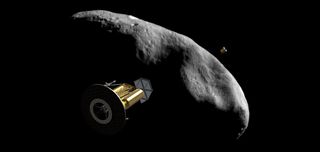
"The Earth intercepts less than 1 percent of the amount of energy that the sun is beaming out," Bova said. "We can build solar power satellites and greatly increase the amount of energy available to the human race."
The moon and asteroids are also packed with riches. For example, some space rocks contain large amounts of platinum-group metals — platinum, ruthenium, rhodium, palladium, osmium and iridium — which are key components of virtually all electronic devices.
The platinum-group elements represent "one opportunity to get a material in space that could be of great benefit back here on Earth," said Chris Lewicki, president of the billionaire-backed asteroid-mining firm Planetary Resources. [ How Asteroid Mining Could Work (Infographic) ]
The enormous wealth created by extracting such resources could help put the brakes on our species' exponential growth, Bova said.
"My reading of history is that the best way to reduce population growth is to make people richer; rich people don't have as many children as poor people," he said. (Indeed, social scientists have found that fecundity tends to drop as per capita income rises, both within a society and across different countries.)
A relatively small number of people working in space, Bova added, "can return the resources needed to support a huge population and make it wealthy enough so that the population growth slows down."
Changing hearts and minds
Bova doesn't see the colonization of other worlds such as Mars as a viable safety valve for an overcrowded Earth, though, saying that it would be impractical to ship enough people off the planet to make an appreciable dent in the global population anytime soon.
However, that doesn't mean that off-world settlement can't lighten humanity's footprint on Earth, others say.
"Colonizing Mars will have a positive effect on achieving a sustainable human population on Earth because of the impact that it will have on Earth, not because of the number of Mars migrants," said Bas Lansdorp, CEO and co-founder of the Netherlands-based nonprofit Mars One , which aims to land four people on the Red Planet in 2023 as the vanguard of a permanent human settlement.
This plan is quite bold, as NASA — the world's premier space agency — is hoping to get people to the vicinity of Mars by the mid-2030s.
"Having humanity experience setting foot on another planet will make people aware that the Earth is our spaceship and that we need to treat it well," Lansdorp told LiveScience via email. "This happened because of the moon landings too, but the effect will be larger when it concerns colonization instead of a visit, and because of the larger reach of video images in 2023 as compared to 1969."
The rise of the space tourism industry — which will likely be aided by population growth, since more people should be able to afford flights to space — could have similar effects, helping more and more people see Earth as it really is: a tiny outpost of life, alone and adrift in the vast blackness of space, experts say.
"Those of us who have had the luxury of having had that view — I think you become a better steward of your own planet," said Commercial Spaceflight Federation president Michael Lopez-Alegria, a former NASA astronaut with four space missions under his belt.
"So the more people who are part of that club, so to speak, I think the better for us all," Lopez-Alegria told LiveScience.
Follow Mike Wall on Twitter @michaeldwall and Google+ . Follow us @livescience , Facebook & Google+ . Original article on LiveScience .

Dying SpaceX rocket tears blood-red 'hole' in the sky over Texas — again
After months of sending gibberish to NASA, Voyager 1 is finally making sense again
World's thinnest gold leaf, dubbed 'goldene,' is just 1 atom thick
Most Popular
- 2 Giant, 82-foot lizard fish discovered on UK beach could be largest marine reptile ever found
- 3 Global 'time signals' subtly shifted as the total solar eclipse reshaped Earth's upper atmosphere, new data shows
- 4 Rare 'porcelain gallbladder' found in 100-year-old unmarked grave at Mississippi mental asylum cemetery
- 5 'I nearly fell out of my chair': 1,800-year-old mini portrait of Alexander the Great found in a field in Denmark
- 2 Hundreds of black 'spiders' spotted in mysterious 'Inca City' on Mars in new satellite photos
- 3 Plato's burial place finally revealed after AI deciphers ancient scroll carbonized in Mount Vesuvius eruption
- 4 China green-lights mass production of autonomous flying taxis — with commercial flights set for 2025
- 5 'We were in disbelief': Antarctica is behaving in a way we've never seen before. Can it recover?

NASA releases detailed global climate change projections
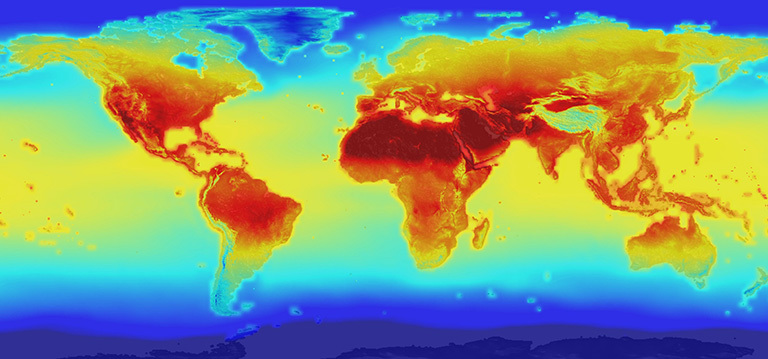
NASA has released data showing how temperature and rainfall patterns worldwide may change through the year 2100 because of growing concentrations of greenhouse gases in Earth’s atmosphere.
The dataset, which is available to the public, shows projected changes worldwide on a regional level in response to different scenarios of increasing carbon dioxide simulated by 21 climate models. The high-resolution data, which can be viewed on a daily timescale at the scale of individual cities and towns, will help scientists and planners conduct climate risk assessments to better understand local and global effects of hazards, such as severe drought, floods, heat waves and losses in agriculture productivity.
“NASA is in the business of taking what we’ve learned about our planet from space and creating new products that help us all safeguard our future,” said Ellen Stofan, NASA chief scientist. “With this new global dataset, people around the world have a valuable new tool to use in planning how to cope with a warming planet.”
The new dataset is the latest product from the NASA Earth Exchange (NEX), a big-data research platform within the NASA Advanced Supercomputing Center at the agency's Ames Research Center in Moffett Field, California. In 2013, NEX released similar climate projection data for the continental United States that is being used to quantify climate risks to the nation’s agriculture, forests, rivers and cities.
"This is a fundamental dataset for climate research and assessment with a wide range of applications,” said Ramakrishna Nemani, NEX project scientist at Ames. “NASA continues to produce valuable community-based data products on the NEX platform to promote scientific collaboration, knowledge sharing, and research and development."
This NASA dataset integrates actual measurements from around the world with data from climate simulations created by the international Fifth Coupled Model Intercomparison Project. These climate simulations used the best physical models of the climate system available to provide forecasts of what the global climate might look like under two different greenhouse gas emissions scenarios: a “business as usual” scenario based on current trends and an “extreme case” with a significant increase in emissions.
The NASA climate projections provide a detailed view of future temperature and precipitation patterns around the world at a 15.5 mile (25 kilometer) resolution, covering the time period from 1950 to 2100. The 11-terabyte dataset provides daily estimates of maximum and minimum temperatures and precipitation over the entire globe.
NEX is a collaboration and analytical platform that combines state-of-the-art supercomputing, Earth system modeling, workflow management and NASA remote-sensing data. Through NEX, users can explore and analyze large Earth science data sets, run and share modeling algorithms and workflows, collaborate on new or existing projects and exchange workflows and results within and among other science communities.
NEX data and analysis tools are available to the public through the OpenNEX project on Amazon Web Services. OpenNEX is a partnership between NASA and Amazon, Inc., to enhance public access to climate data, and support planning to increase climate resilience in the U.S. and internationally. OpenNEX is an extension of the NASA Earth Exchange in a public cloud-computing environment.
Additional information about the new NASA climate projection dataset is available here . Download the dataset here . OpenNEX information and training materials are available here .
Related Terms
- Climate Change
- Climate Modeling
Explore More

NASA’s CloudSat Ends Mission Peering Into the Heart of Clouds
Over the course of nearly two decades, its powerful radar provided never-before-seen details of clouds and helped advance global weather and climate predictions. CloudSat, a NASA mission that peered into hurricanes, tallied global snowfall rates, and achieved other weather and climate firsts, has ended its operations. Originally proposed as a 22-month mission, the spacecraft was […]

NASA Data Helps Beavers Build Back Streams
Humans aren’t the only mammals working to mitigate the effects of climate change in the Western United States. People there are also enlisting the aid of nature’s most prolific engineers – beavers. Using NASA-provided grants, two open-source programs from Boise State University in Idaho and Utah State University in Logan are making it possible for […]

NASA Selects New Aircraft-Driven Studies of Earth and Climate Change
Discover more topics from nasa.
Explore Earth Science

Earth Science in Action

Earth Science Data

Facts About Earth


IMAGES
VIDEO
COMMENTS
The author of a new research article in the International Journal of Astrobiology says that ETCs may not need starships to escape existential threats and travel to another star system. They could instead use free-floating planets, also known as rogue planets. The article is "Migrating extraterrestrial civilizations and interstellar colonization ...
By 2100, a person will be able to travel from Vladivostok to Lisbon in just over 2 hours (minus layovers, of course)! Today, the same train ride takes 146 to 162 hours (six or seven days) and ...
NASA aims to travel to the moon again—and beyond. Here's a look at the 21st-century race to send humans into space. Private spaceflight is not a new concept. In the United States, commercial ...
Based on projections, the study estimate that by 2100, about 3.11 billion people worldwide (33%) will have a secondary diploma, 3.53 billion (38%) will have a post-secondary education, and just 81 ...
Harold ("Sonny") White from NASA's Johnson Space Center is a member of Icarus Interstellar, the nonprofit foundation whose mission is to realize interstellar flight before the year 2100. At the 2012 meeting of 100YSS, he reported using a laser to try to warp spacetime by 1 part in 10 million with the aim of helping to make interstellar travel ...
Axiom Space. 1. Space exploration will be a mix of public and private money. If you look at even the NASA missions returning to the moon, lots of different private space companies are involved in ...
Humans may one day travel beyond the solar system on board rockets powered by nuclear fusion. An artist's impression of the Voyager 1 spacecraft entering interstellar space. Photo: Nasa. Only two probes have reached interstellar space - the region beyond the solar system - since the start of human space exploration.
The result of the five-year project was the design of the Daedalus spacecraft, a two-stage, 54,000-ton nuclear rocket that would boost a 400-ton robotic probe to around 12 percent of the speed of ...
Oct 08, 2015. RELEASE 15-206. NASA is leading our nation and the world on a journey to Mars, and Thursday the agency released a detailed outline of that plan in its report, "NASA's Journey to Mars: Pioneering Next Steps in Space Exploration.". "NASA is closer to sending American astronauts to Mars than at any point in our history ...
NASA One Step Closer to Fueling Space Missions with Plutonium-238. 2 min read. The recent shipment of heat source plutonium-238 from the U.S. Department of Energy's (DOE's) Oak Ridge National Laboratory to its…. Article.
December 29, 2022. In December of 1972, the astronaut Eugene Cernan left his footprints and daughter's initials in the lunar dust. In doing so, he became the last man to set foot on the moon ...
The truth is that interstellar travel and exploration is technically possible. There's no law of physics that outright forbids it. But that doesn't necessarily make it easy, and it certainly doesn ...
The effort, to journey between stars in the 2100s, began with a workshop and now is in the study phase. NASA's Ames Research Center and the Defense Advanced Research Projects Agency (DARPA) are ...
Human space populations will remain dependent to a large degree on support from Earth but increasingly our human presence in space will become self-managing and self-sustaining. 2100 = 1,000,000. By 2100 human space population will exceed 1,000,000, a drop in the bucket compared to the billions of us on Earth, but still a substantial population.
We Can Travel to Another Star System by 2100. IN 1939, INTREPID engineers at the fledgling British Interplanetary Society proposed a daring mission into outer space. They conceived of a starship designed for ferrying explorers to the moon. The plan was exquisitely detailed, describing a rocket propulsion system that would be fired in stages, as ...
For one thing, there will be more rich space enthusiasts like Musk willing to help initiate or bankroll manned exploration efforts — perhaps many more by 2100, if per capita income continues to ...
Saab serves the global market of governments, authorities and corporations with products, services and solutions ranging from military defence to civil security. Saab AB (publ), SE-581 88 Linköping, Sweden, Reg No 556036-0793. The first Briton in space, Helen Sharman, meets the first Swedish astronaut, Professor Christer Fuglesang, to discuss ...
Led by the Icarus Interstellar foundation, the ambition of the project is to achieve interstellar space travel by the year 2100. Find out more about growing a city in space » Prepping the human ...
This century? 2021-2100? Man y'all got some wild (and frankly unrealistic) ideas from some of the posts I've read. Chemical rockets will only be used to launch from planetary bodies. Some variation of a nuclear rocket will be the norm and standard for space propulsion as far as manned vehicles go. Permanent space based tugs and cycler ships.
And in 2100 the asteroid mines will just be starting with providing additional resources like metals, which will be used in the brand new orbital factories, which use the metal to construct the structure of larger Earth orbit satellites. ... We may be busy just maintaining human civilization to afford luxuries like space travel. Reply reply
The NASA climate projections provide a detailed view of future temperature and precipitation patterns around the world at a 15.5 mile (25 kilometer) resolution, covering the time period from 1950 to 2100. The 11-terabyte dataset provides daily estimates of maximum and minimum temperatures and precipitation over the entire globe.